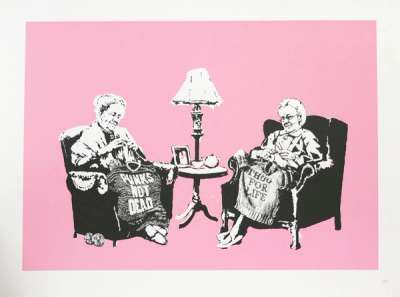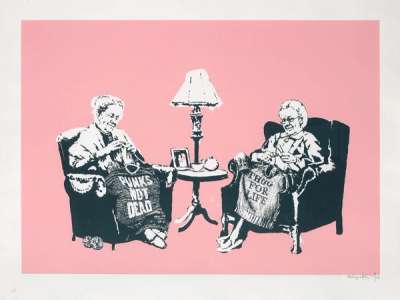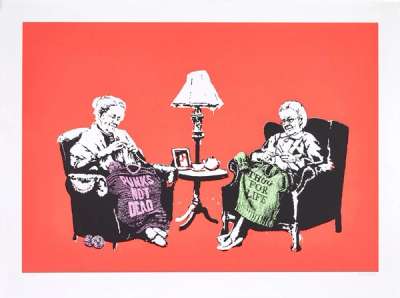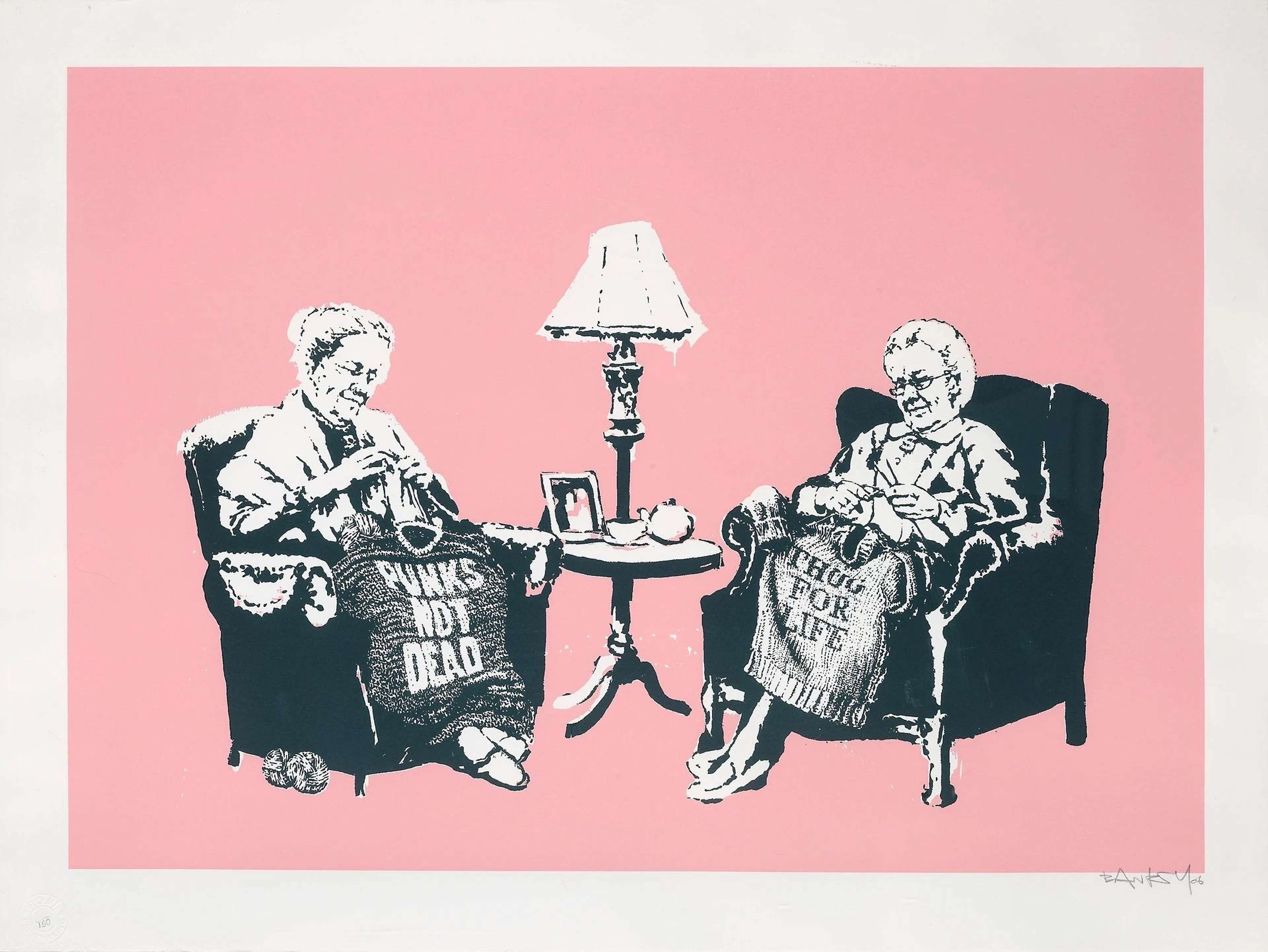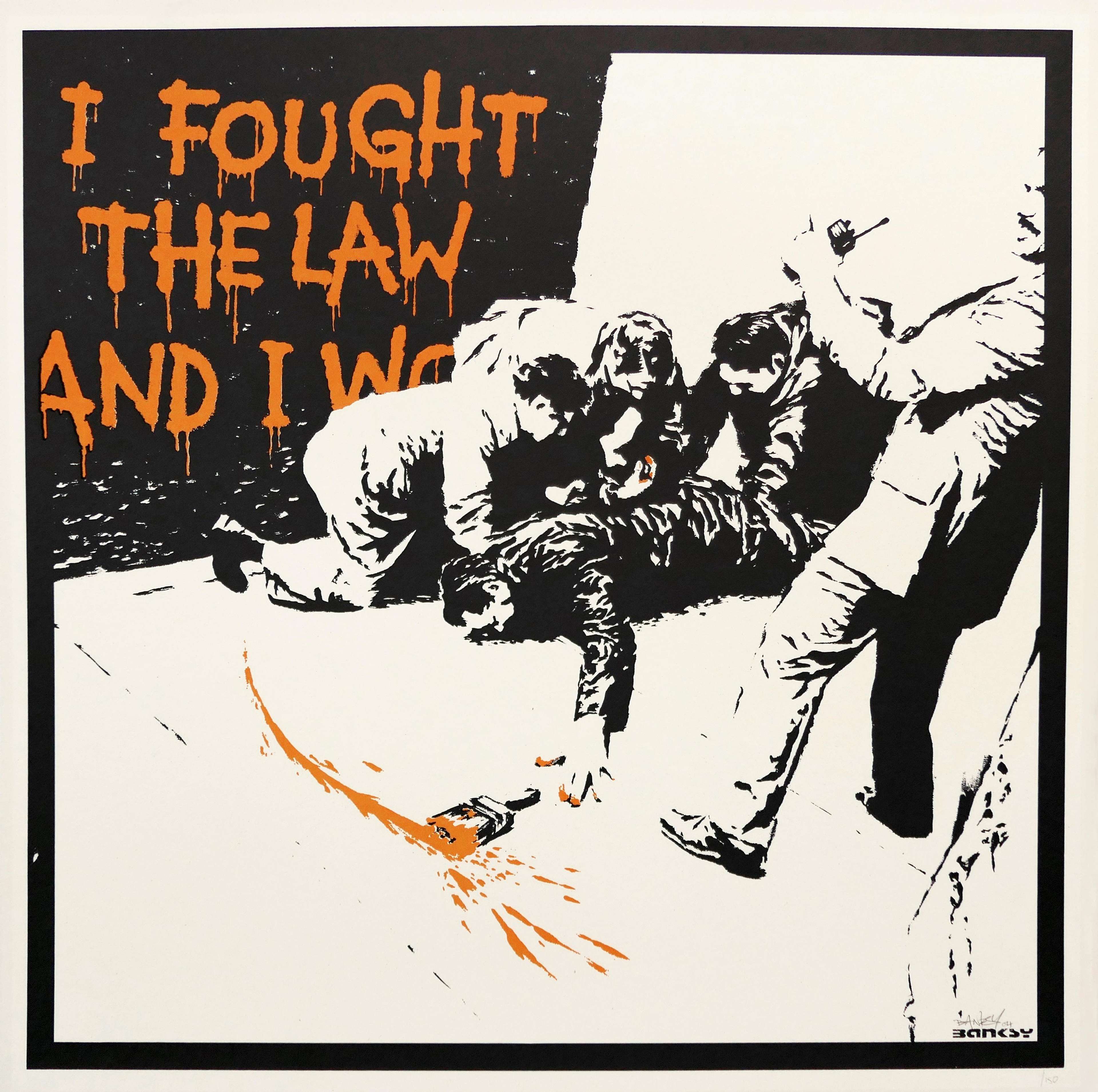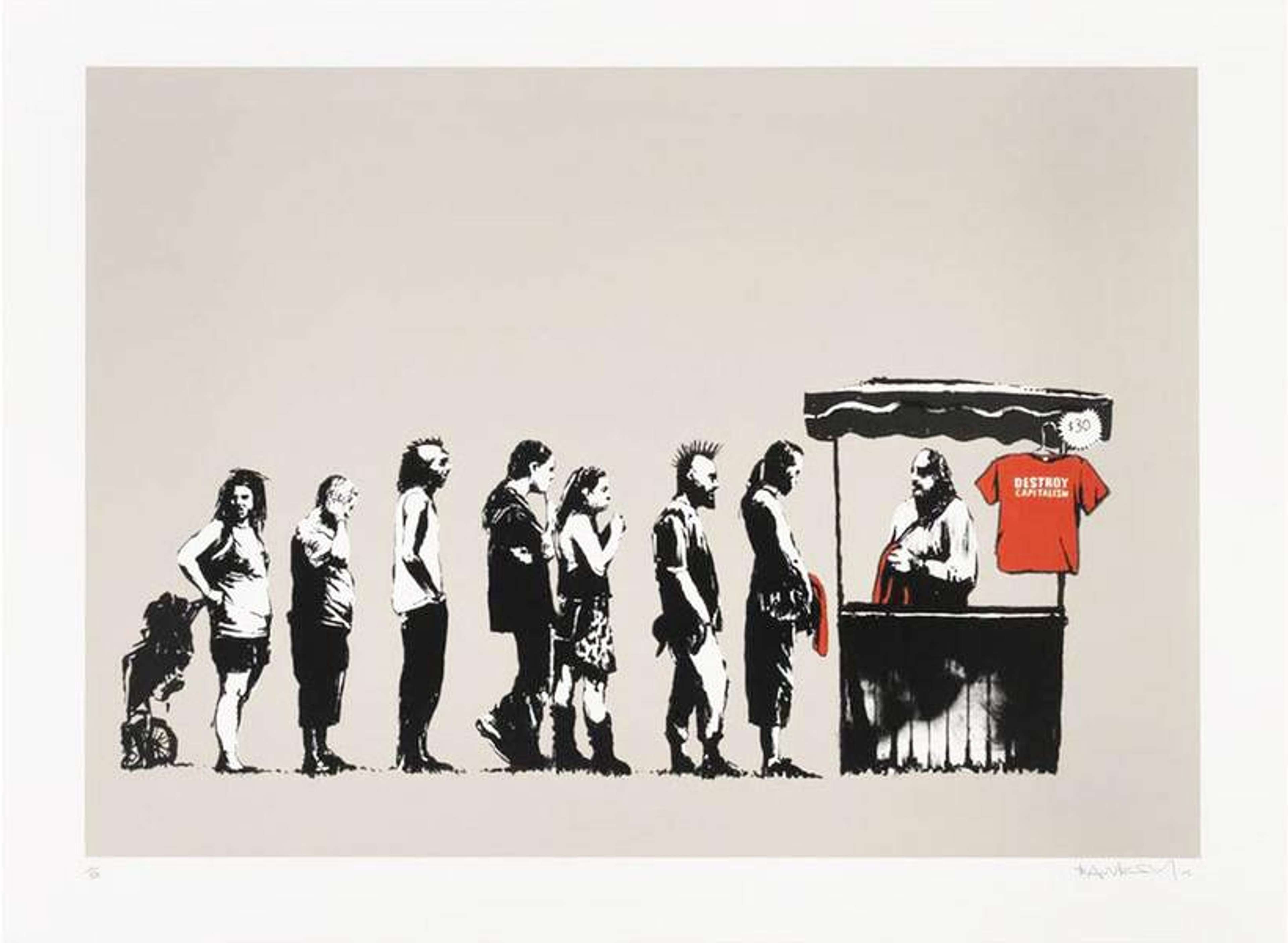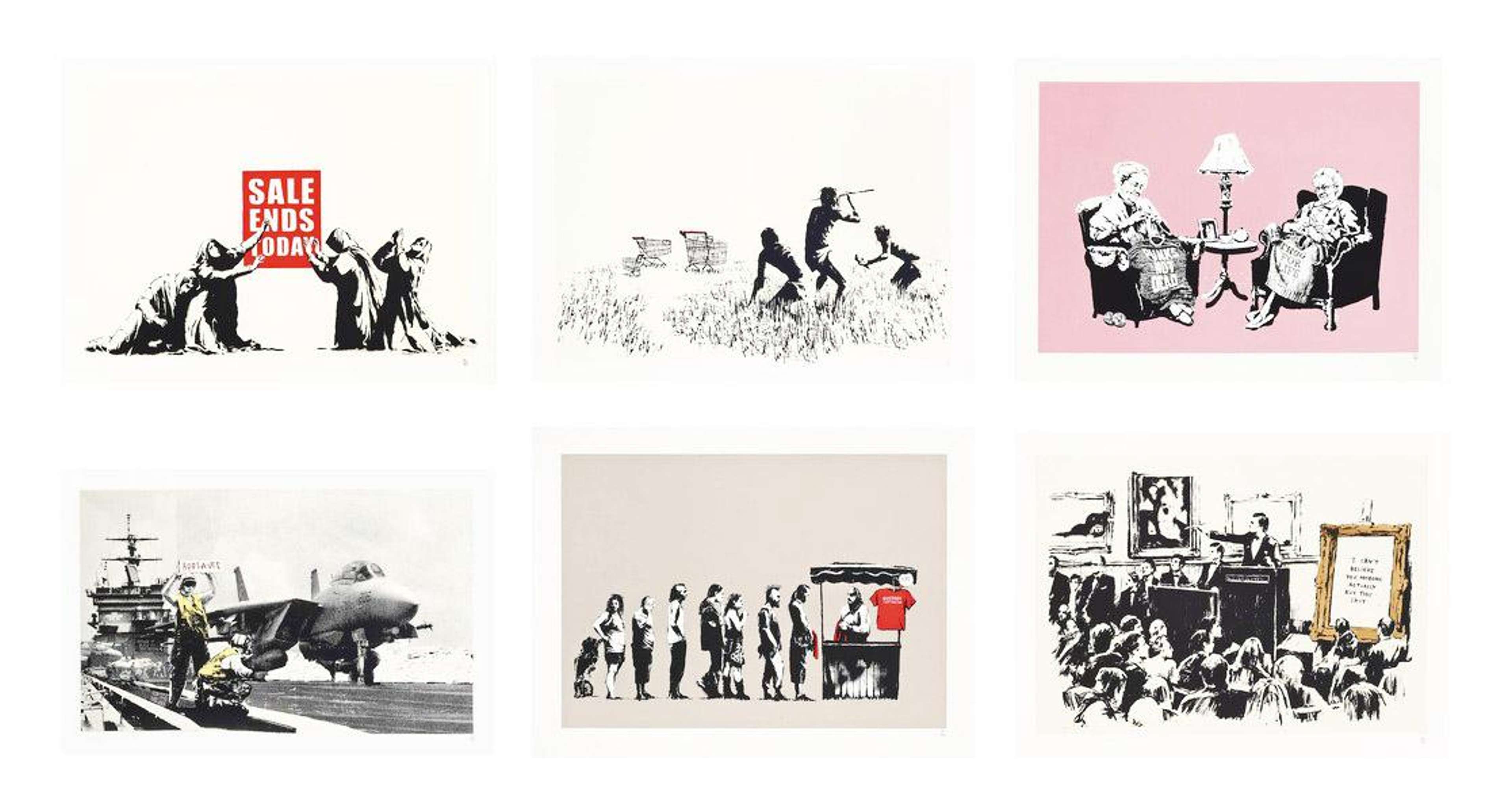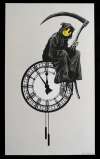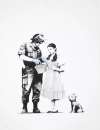Grannies
Banksy's Grannies (2006) can be interpreted as either a nod to musical subcultures or an indictment that those groups have ‘sold out’. As the elderly ladies knit jumpers with the unlikely slogans "Punks Not Dead" and "Thug for Life”, Banksy begs the question: are these grannies retired rebels or simply armchair philosophers?
Banksy Grannies For sale
Grannies Value (5 Years)
Works from the Grannies series by Banksy have a strong market value presence, with 84 auction appearances. Top performing works have achieved standout auction results, with peak hammer prices of £280000. Over the past 12 months, average values across the series have ranged from £5000 to £280000. The series shows an average annual growth rate of 10.74%.
Grannies Market value
Auction Results
| Artwork | Auction Date | Auction House | Return to Seller | Hammer Price | Buyer Paid |
|---|---|---|---|---|---|
 Grannies Banksy Unsigned Print | 26 Mar 2025 | Gormley's Art Auctions | £11,050 | £13,000 | £16,000 |
 Grannies Banksy Signed Print | 19 Jun 2024 | Tate Ward Auctions | £16,150 | £19,000 | £25,000 |
 Grannies (hand finished) Banksy Signed Print | 18 Mar 2021 | Sotheby's Online | £144,500 | £170,000 | £230,000 |
Sell Your Art
with Us
with Us
Join Our Network of Collectors. Buy, Sell and Track Demand
Meaning & Analysis
Banksy’s limited edition screenprint, Grannies was first shown at his 2006 Barely Legal exhibition, and captures the artist’s now-familiar sense of humour. It was displayed alongside 100 unsigned screen print editions printed by Modern Multiples, that sold for $500 apiece.
The work itself portrays a couple of elderly grandmothers knitting in their armchairs, accompanied by cups of tea and a chintz lampshade. On closer inspection, however, the text emblazoned in block capitals across the jumpers they are knitting bears the unlikely slogans “Punks Not Dead” and “Thug For Life”.
This typically subversive reminder that Banksy is at work here has ensured that Grannies is a particularly popular print, made all the more valuable by its relatively low edition size. In 2007, this work was released by UK-based printer Pictures of Walls, as just 150 signed Grannies and 600 unsigned, as well as a hand-finished signed print edition of just 11.
The Grannies in question appear content to be partaking in their humble act of rebellion. Rendered in Banksy’s famous black and white stencil style, the pair are set against a block pink background, a formal juxtaposition that only serves to heighten the humorous contradiction between scene and message.
Open to various interpretations, perhaps this Banksy print is aimed at reminding the viewer not to underestimate the often-innocuous appearance of the older generation, which acts as a guise for their rebellious pasts. It could also be read as the artist encouraging the older generation to pass down their acts of defiance to the future generations, along with the knitted jumpers they gift their grandchildren. On the flip side, it has also been suggested that the picture represents the gentrification of counter-culture into a tame, mainstream movement suitable even for grannies.
